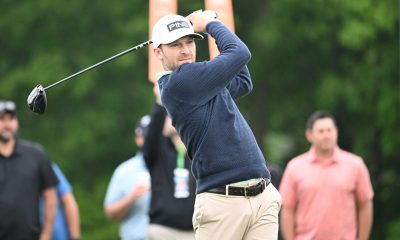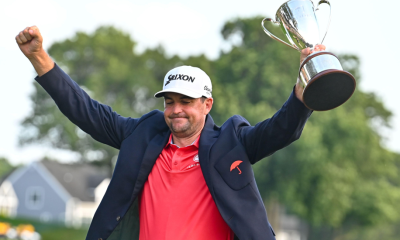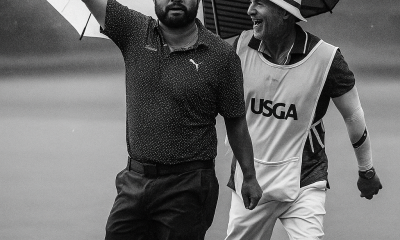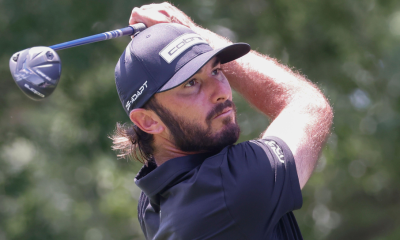Opinion & Analysis
It’s SHO time: The Shell Houston Open preview

By Pete Pappas
GolfWRX Staff Writer
The first Houston Open debuted in 1922 as the Independent Insurance Agent Open, making it the third oldest tournament on the PGA Tour behind the Western Open (1899), and the Canadian Open (1904).
Yet despite this long-established pedigree, the Shell Houston Open has to sometimes feel like the black sheep of the PGA Tour schedule.
Since 2007 it’s played second fiddle to Augusta National. And its notoriety has been more about being the final “tune-up” for The Masters (similarities or dissimilarities aside) than it’s been in being a regular event on the PGA Tour since 1946 (impressive in its own right).
The PGA Tour’s decision in 2007 to move the Houston Open to the week immediately preceding The Masters was embattled in controversy when Phil Mickelson (who prefers to play the week before a major to keep his competitive juices flowing) said he wouldn’t play the event because nothing about it resembled Augusta.
Lefty’s comments presumably were directly responsible for the 2010 renovations that did make the Tournament Course at Redstone Golf Club set up more like Augusta. But that wasn’t exactly the player endorsement this Reese Jones course needed while trying to attract the world’s top players.
To be sure the Shell Houston Open has corralled its fair share of big names since then; for instance, Adam Scott, Paul Casey, and Anthony Kim are all champions of this event (in 2007, 2009, and 2010 respectively).
But it hasn’t quite been the flowing list of “marquee” names envisioned, as evidenced by the notable absentees this week, including seven of the world’s top-10 ranked players in the Official World Golf Rankings, with world No. 1 Luke Donald, and No. 2 ranked Rory McIlroy the spotlight missing in action.
And now with every media outlet blowing hot and cold all week about what Tiger Woods’ first victory in 923 days at the Arnold Palmer Invitational this past Sunday means, the Shell Houston Open probably won’t get the recognition it deserves once again.
Absent 2011 defending champion Mickelson robustly cracking another driver (as he did here in round one last year), the tournament before the year’s first major might just go gently into the Humble, Texas night.
But as they say, the SHO (Shell Houston Open) must go on.
The road not taken
Those players who have decided the road to Augusta goes through Redstone will include 15 major champions (including three major winners from 2011), seven previous Shell Houston Open champions, and six 2012 PGA Tour winners.
52-year old Fred Couples (one of the most popular players in tour history with 15 career PGA Tour wins) makes his 20th career start at Shell, and is coming off his first win on the over-50 circuit this season.
Couples claimed his seventh-career Champions Tour victory at the Mississippi Gulf Classic last week by sinking a 10-foot birdie putt on No. 18 at the treacherous Fallen Oak Golf Course.
“The bottom line is you get a lot of chances to win if you play well,” said Couples. “It was a fun day and I’m looking forward to the Shell and then Augusta.”
2011 SHO defending champion Phil Mickelson tries to become the first player this season to win multiple times on the PGA Tour, and looks to regain momentum after a disappointing T-24 performance last week at the Arnold Palmer Invitational presented by MasterCard at Bay Hill.
Mickelson sounded confident heading into Thursday. “I find that I play my best in a major championship when I compete the week before,” Mickelson said. “It gets me in a competitive frame of mind, and I enjoy the challenge of only having three days between competitive rounds.”
Houston we have a problem
With 25 players in Houston already safely qualified to play next week in the 77th Masters, 100 other players unambiguously need a victory to capture a birth at Augusta (absent a Masters Committee discretionary invitation).
But before you start thinking everyone in the Shell field is only there to secure that treasured “green jacket” opportunity, think again.
“I’m not smart enough to concentrate on two things at once,” said world No. 3 Lee Westwood. “So I have to concentrate on the thing at hand, which is trying to win [The Shell Houston Open] this week.”
Everything’s bigger in Texas
The Tournament Course at Redstone is one of the longest on the PGA Tour at 7,457 yards (32 yards longer than Augusta National). And its prodigious length is spread over a protracted 350 acres.
But is bigger really better? The Shell course ranked 29 out of 51 in difficulty on the PGA Tour in 2011 (but first in spectator fatigue).
The coyotes wail along the trail (clap, clap, clap, clap) deep in the heart of Texas!
Lee Westwood (10/1). Westwood is living up to his world No. 3 billing with two top-10 finishes to go along with a top-25, and is third in scoring average (69.38) this year on tour.
The Englishman is second in greens-in-regulation and first in sand saves (which can translate to low scores on a Shell course with heavily bunkered greens and more than 60 sand traps).
Hampered by two poor days between a strong opening and closing day last year, he finished T-30 at Redstone in 2011. But Westwood’s track record at Shell is impressive overall (with a T-11 in 2009 and a T-8 in 2010).
Westwood sees similarities between Redstone and Augusta, but he’s not just gearing up for The Masters.
“I’m not one of these people for playing the shot that I have to play next week,” he said. “I like to play each tournament and give it the respect it deserves and play each course on its merits, play a shot when it’s necessary.”
Westwood hasn’t played since the World Golf Championships-Cadillac Championship (T-29).
Phil Mickelson (12/1). The world No. 15 also has two top-10 finishes in 2012 including his thrilling victory at the AT&T Pebble Beach National Pro-Am, and equally emotional playoff loss at the Northern Trust Open.
Lefty is one of only four players to triumph the week before winning The Masters, and last year went 7-under on Sunday en route to taking home the Shell Houston Open trophy (20-under, 268).
Mickelson’s bogey-free 63 on moving day in 2011 was a course record, and he led the field with 27 birdies (18 coming over the weekend). However he was wild with his driver at Redstone (and this year is hitting fairways at a pedestrian 54 percent clip). That’s something he’d like to improve on this week.
Phil’s iron play could also use a bit of sharpening heading into Augusta (64 percent GIR), but it’s been hard to argue with his sixth-place ranking in birdie conversion and third-place ranking in strokes gained-putting.
I think Phil is primarily interested in tinkering with and tweaking his game to position himself for a run at his fourth green jacket next week.
But if he’s in contention on Sunday in Houston, he’ll put the full-court-press on winning Shell for the second time in his career (joining a list of seven others who’ve also won twice, including last week’s masterly host, Arnold Palmer).
Steve Stricker (15/1). In many circles Sticker is mentioned as the best American golfer on tour (of course you know who jumped into that discussion again with a win at the Arnold Palmer Invitational last week).
In four starts this season Stricker’s notched three top-10 finishes, and a victory at the PGA Tour season opener in Hawaii (the Hyundai Tournament of Champions).
And if the PGA Tour Player of the Year voting was held today, it might be difficult to vote against him.
He’s first in birdie average, second in scrambling, and fifth in GIR this season. Stricker is also first in back-9 scoring average (showing he brings it in the clutch).
The world No. 5 ranked player finished T-4 here last year, and has four top-11 finishes in five career starts at Redstone.
The biggest question about his game heading into Shell will be is he rested or rusty coming back for the first time since his T-8 finish at the WGC-Cadillac.
Keegan Bradley (20/1). Bradley is a picture of consistency. The St. John’s University alum hasn’t finished lower than 22nd place in each of his eight starts this season.
He has two top-10 finishes, and a second place finish (a playoff loss) at the Northern Trust Open.
Bradley ranks fifth in all around ranking, seventh in scoring average, 10th in scrambling, 20th in GIR, and 31st in total driving.
Like Stricker he’s also making his first start since his WGC-Cadillac T-8 finish (and is making his second ever appearance at Redstone).
Ernie Els (25/1). Absent a “special invitation” Els needs a victory in Houston to get his 19th crack at Augusta National next week.
The Big Easy has two top-5 finishes the past two weeks but both could easily have been victories.
The pressure of this must-win scenario will be boiling over at Redstone, even higher than it was when Els’ green jacket bid was derailed with a bogey-bogey finish two weeks ago on Sunday at the Transitions Championship.
One of the most feel-good or heartbreaking stories of the PGA Tour season will unfold this week in the Houston heat.
Graeme McDowell (25/1). McDowell nearly tamed the Tiger in Arnie’s Kingdom last week at Bay Hill finishing in solo second place.
G-Mac would rank 17th in GIR (if eligible) and 30th in strokes gained-putting.
He’s only appeared once at Redstone in 2006 (a T-54 finish).
Johnson Wagner (30/1). “Fear the Stache.”
Wagner’s first career victory came here at the Shell Houston Open in 2008.
He’s currently ranked No. 1 in the FedExCup standings.
His four top-10 finishes are the most on Tour (including his latest T-4 last week at Bay Hill).
Kevin Streelman (80/1). “GolfWRX Swagger.”
I’m picking Streelman purely on what I’ll call a “WRX swagger hunch.”
Feeding hundreds of thousands of frenzied GolfWRX maniacs your 2011 Masters yardage book?
Seriously good karma Streels!
Perfect Pairings
Phil Mickelson, Charl Schwartzel, Fred Couples
Keegan Bradley, Graeme McDowell, Lee Westwood
Kyle Stanley, Anthony Kim, Ernie Els
Hunter Mahan, Johnson Wagner, Steve Stricker
John Huh, Louis Oosthuizen, Robert Allenby
Ben Crane, Scott Piercy, Y.E. Yang
Lucas Glover, Jason Bohn, Camilo Villegas
Billy Mayfair, Kevin Streelman, Matt Every
Should I stay or should I go?
Put yourselves in the spikes of a PGA Tour professional. You’re heading into Augusta, the first major championship of the season (and possibly the biggest).
Would you take the week off? Would you play the Shell Houston Open? Would you just kick it with friends and watch reruns of The Big Bang Theory?
Redstone is set up to be similar to Augusta National.
Some players like Tiger prefer to skip the week before The Masters and get in some final preparation and specific practice.
Others like Phil prefer to keep the momemtum going and play straight into that major.
Whichever route of preparation you’d choose, I’m sure you have good reasons. But if it were me? I wouldn’t settle for similar.
Notes
Television Coverage
Thursday and Friday: Golf Channel 3-6 p.m. EST
Saturday and Sunday: NBC 3-6 p.m. EST
Radio Coverage
Thursday through Sunday: SiriusXM Satellite Radio 12-6 p.m. EST
Odds
Odds provided by Las Vegas PGA Tour Golf Betting Odds
You can follow Pete on twitter @TheGreekGrind
Opinion & Analysis
The 2 primary challenges golf equipment companies face

As the editor-in-chief of this website and an observer of the GolfWRX forums and other online golf equipment discourse for over a decade, I’m pretty well attuned to the grunts and grumbles of a significant portion of the golf equipment purchasing spectrum. And before you accuse me of lording above all in some digital ivory tower, I’d like to offer that I worked at golf courses (public and private) for years prior to picking up my pen, so I’m well-versed in the non-degenerate golf equipment consumers out there. I touched (green)grass (retail)!
Complaints about the ills of and related to the OEMs usually follow some version of: Product cycles are too short for real innovation, tour equipment isn’t the same as retail (which is largely not true, by the way), too much is invested in marketing and not enough in R&D, top staffer X hasn’t even put the new driver in play, so it’s obviously not superior to the previous generation, prices are too high, and on and on.
Without digging into the merits of any of these claims, which I believe are mostly red herrings, I’d like to bring into view of our rangefinder what I believe to be the two primary difficulties golf equipment companies face.
One: As Terry Koehler, back when he was the CEO of Ben Hogan, told me at the time of the Ft Worth irons launch, if you can’t regularly hit the golf ball in a coin-sized area in the middle of the face, there’s not a ton that iron technology can do for you. Now, this is less true now with respect to irons than when he said it, and is less and less true by degrees as the clubs get larger (utilities, fairways, hybrids, drivers), but there remains a great deal of golf equipment truth in that statement. Think about it — which is to say, in TL;DR fashion, get lessons from a qualified instructor who will teach you about the fundamentals of repeatable impact and how the golf swing works, not just offer band-aid fixes. If you can’t repeatably deliver the golf club to the golf ball in something resembling the manner it was designed for, how can you expect to be getting the most out of the club — put another way, the maximum value from your investment?
Similarly, game improvement equipment can only improve your game if you game it. In other words, get fit for the clubs you ought to be playing rather than filling the bag with the ones you wish you could hit or used to be able to hit. Of course, don’t do this if you don’t care about performance and just want to hit a forged blade while playing off an 18 handicap. That’s absolutely fine. There were plenty of members in clubs back in the day playing Hogan Apex or Mizuno MP-32 irons who had no business doing so from a ballstriking standpoint, but they enjoyed their look, feel, and complementary qualities to their Gatsby hats and cashmere sweaters. Do what brings you a measure of joy in this maddening game.
Now, the second issue. This is not a plea for non-conforming equipment; rather, it is a statement of fact. USGA/R&A limits on every facet of golf equipment are detrimental to golf equipment manufacturers. Sure, you know this, but do you think about it as it applies to almost every element of equipment? A 500cc driver would be inherently more forgiving than a 460cc, as one with a COR measurement in excess of 0.83. 50-inch shafts. Box grooves. And on and on.
Would fewer regulations be objectively bad for the game? Would this erode its soul? Fortunately, that’s beside the point of this exercise, which is merely to point out the facts. The fact, in this case, is that equipment restrictions and regulations are the slaughterbench of an abundance of innovation in the golf equipment space. Is this for the best? Well, now I’ve asked the question twice and might as well give a partial response, I guess my answer to that would be, “It depends on what type of golf you’re playing and who you’re playing it with.”
For my part, I don’t mind embarrassing myself with vintage blades and persimmons chasing after the quasi-spiritual elevation of a well-struck shot, but that’s just me. Plenty of folks don’t give a damn if their grooves are conforming. Plenty of folks think the folks in Liberty Corner ought to add a prison to the museum for such offences. And those are just a few of the considerations for the amateur game — which doesn’t get inside the gallery ropes of the pro game…
Different strokes in the game of golf, in my humble opinion.
Anyway, I believe equipment company engineers are genuinely trying to build better equipment year over year. The marketing departments are trying to find ways to make this equipment appeal to the broadest segment of the golf market possible. All of this against (1) the backdrop of — at least for now — firm product cycles. And golfers who, with their ~15 average handicap (men), for the most part, are not striping the golf ball like Tiger in his prime and seem to have less and less time year over year to practice and improve. (2) Regulations that massively restrict what they’re able to do…
That’s the landscape as I see it and the real headwinds for golf equipment companies. No doubt, there’s more I haven’t considered, but I think the previous is a better — and better faith — point of departure when formulating any serious commentary on the golf equipment world than some of the more cynical and conspiratorial takes I hear.
Agree? Disagree? Think I’m worthy of an Adam Hadwin-esque security guard tackle? Let me know in the comments.
@golfoncbs The infamous Adam Hadwin tackle ? #golf #fyp #canada #pgatour #adamhadwin ? Ghibli-style nostalgic waltz – MaSssuguMusic
Podcasts
Fore Love of Golf: Introducing a new club concept

Episode #16 brings us Cliff McKinney. Cliff is the founder of Old Charlie Golf Club, a new club, and concept, to be built in the Florida panhandle. The model is quite interesting and aims to make great, private golf more affordable. We hope you enjoy the show!
Opinion & Analysis
On Scottie Scheffler wondering ‘What’s the point of winning?’

Last week, I came across a reel from BBC Sport on Instagram featuring Scottie Scheffler speaking to the media ahead of The Open at Royal Portrush. In it, he shared that he often wonders what the point is of wanting to win tournaments so badly — especially when he knows, deep down, that it doesn’t lead to a truly fulfilling life.
View this post on Instagram
“Is it great to be able to win tournaments and to accomplish the things I have in the game of golf? Yeah, it brings tears to my eyes just to think about it because I’ve literally worked my entire life to be good at this sport,” Scheffler said. “To have that kind of sense of accomplishment, I think, is a pretty cool feeling. To get to live out your dreams is very special, but at the end of the day, I’m not out here to inspire the next generation of golfers. I’m not out here to inspire someone to be the best player in the world, because what’s the point?”
Ironically — or perhaps perfectly — he went on to win the claret jug.
That question — what’s the point of winning? — cuts straight to the heart of the human journey.
As someone who’s spent over two decades in the trenches of professional golf, and in deep study of the mental, emotional, and spiritual dimensions of the game, I see Scottie’s inner conflict as a sign of soul evolution in motion.
I came to golf late. I wasn’t a junior standout or college All-American. At 27, I left a steady corporate job to see if I could be on the PGA Tour starting as a 14-handicap, average-length hitter. Over the years, my journey has been defined less by trophies and more by the relentless effort to navigate the deeply inequitable and gated system of professional golf — an effort that ultimately turned inward and helped me evolve as both a golfer and a person.
One perspective that helped me make sense of this inner dissonance around competition and our culture’s tendency to overvalue winning is the idea of soul evolution.
The University of Virginia’s Division of Perceptual Studies has done extensive research on reincarnation, and Netflix’s Surviving Death (Episode 6) explores the topic, too. Whether you take it literally or metaphorically, the idea that we’re on a long arc of growth — from beginner to sage elder — offers a profound perspective.
If you accept the premise literally, then terms like “young soul” and “old soul” start to hold meaning. However, even if we set the word “soul” aside, it’s easy to see that different levels of life experience produce different worldviews.
Newer souls — or people in earlier stages of their development — may be curious and kind but still lack discernment or depth. There is a naivety, and they don’t yet question as deeply, tending to see things in black and white, partly because certainty feels safer than confronting the unknown.
As we gain more experience, we begin to experiment. We test limits. We chase extreme external goals — sometimes at the expense of health, relationships, or inner peace — still operating from hunger, ambition, and the fragility of the ego.
It’s a necessary stage, but often a turbulent and unfulfilling one.
David Duval fell off the map after reaching World No. 1. Bubba Watson had his own “Is this it?” moment with his caddie, Ted Scott, after winning the Masters.
In Aaron Rodgers: Enigma, reflecting on his 2011 Super Bowl win, Rodgers said:
“Now I’ve accomplished the only thing that I really, really wanted to do in my life. Now what? I was like, ‘Did I aim at the wrong thing? Did I spend too much time thinking about stuff that ultimately doesn’t give you true happiness?’”
Jim Carrey once said, “I think everybody should get rich and famous and do everything they ever dreamed of so they can see that it’s not the answer.”
Eventually, though, something shifts.
We begin to see in shades of gray. Winning, dominating, accumulating—these pursuits lose their shine. The rewards feel more fleeting. Living in a constant state of fight-or-flight makes us feel alive, yes, but not happy and joyful.
Compassion begins to replace ambition. Love, presence, and gratitude become more fulfilling than status, profits, or trophies. We crave balance over burnout. Collaboration over competition. Meaning over metrics.
Interestingly, if we zoom out, we can apply this same model to nations and cultures. Countries, like people, have a collective “soul stage” made up of the individuals within them.
Take the United States, for example. I’d place it as a mid-level soul: highly competitive and deeply driven, but still learning emotional maturity. Still uncomfortable with nuance. Still believing that more is always better. Despite its global wins, the U.S. currently ranks just 23rd in happiness (as of 2025). You might liken it to a gifted teenager—bold, eager, and ambitious, but angsty and still figuring out how to live well and in balance. As much as a parent wants to protect their child, sometimes the child has to make their own mistakes to truly grow.
So when Scottie Scheffler wonders what the point of winning is, I don’t see someone losing strength.
I see someone evolving.
He’s beginning to look beyond the leaderboard. Beyond metrics of success that carry a lower vibration. And yet, in a poetic twist, Scheffler did go on to win The Open. But that only reinforces the point: even at the pinnacle, the question remains. And if more of us in the golf and sports world — and in U.S. culture at large — started asking similar questions, we might discover that the more meaningful trophy isn’t about accumulating or beating others at all costs.
It’s about awakening and evolving to something more than winning could ever promise.






















peak904
Apr 1, 2012 at 12:53 pm
Did Phil put in play C taper shafts in his irons this week?